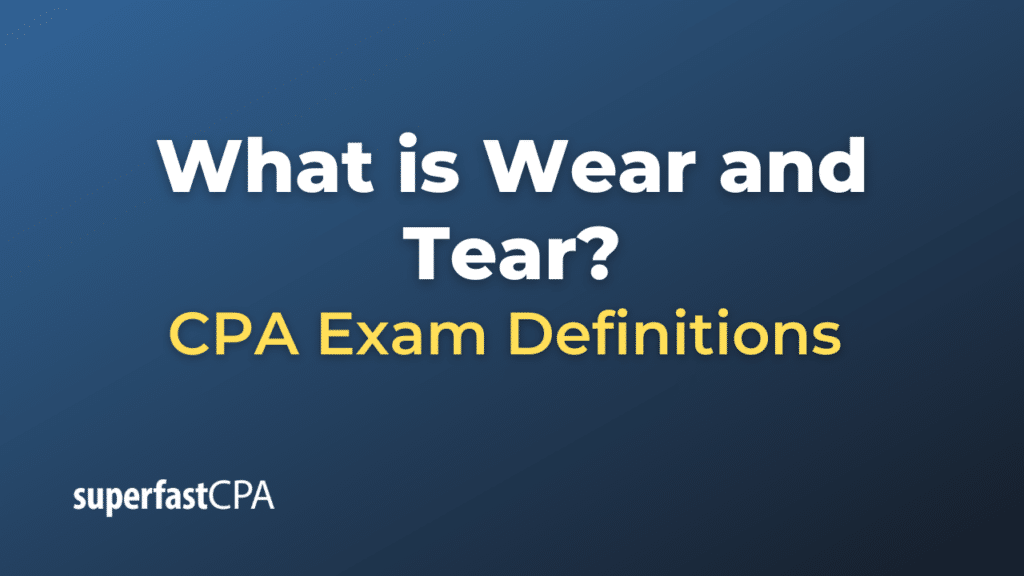Wear and Tear
In accounting, “wear and tear” refers to the natural and inevitable depreciation or deterioration of an asset’s value over time due to its regular use, age, and other factors such as exposure to environmental conditions. Accounting practices recognize this gradual loss in value and allocate it over the asset’s useful life through depreciation.
Depreciation is an accounting method used to allocate the cost of tangible assets to the periods in which they are used or generate revenue. In other words, it spreads out the cost of assets like buildings, vehicles, and machinery over their useful lives. By accounting for wear and tear through depreciation, businesses can more accurately reflect the asset’s current value on the balance sheet and match expenses with revenue on the income statement.
Types of Depreciation Methods:
- Straight-Line Depreciation: This is the simplest form of depreciation where the asset’s value is reduced by an equal amount each year over its useful life.
- Double Declining Balance: This is an accelerated depreciation method where the asset loses value more quickly in the initial years of its useful life.
- Units-of-Production: This method ties depreciation to the actual usage of the asset, such as the number of miles driven for a vehicle.
Example of Wear and Tear
Let’s explore a different example that involves accounting for wear and tear on computer equipment for a small graphic design agency called “Creative Minds.”
Initial Purchase:
- “Creative Minds” purchases five high-end computers for its design team at a total cost of $15,000.
Accounting Steps for Wear and Tear:
- Determine Useful Life and Salvage Value: The agency estimates that the computers will have a useful life of 3 years and virtually no salvage value at the end due to rapid technological advancements.
- Calculate Annual Depreciation: Using the straight-line method, the annual depreciation would be:Annual Depreciation Expense=Cost of Asset−Salvage ValueUseful Life=$15,000−$03=$5,000Annual Depreciation Expense=Useful LifeCost of Asset−Salvage Value=3$15,000−$0=$5,000
- Journal Entry for Depreciation: At the end of the first year, the agency would make a journal entry to record the depreciation:
- Debit Depreciation Expense: $5,000
- Credit Accumulated Depreciation: $5,000
- Update the Balance Sheet: The book value of the computers on the balance sheet would be the original cost minus the accumulated depreciation.
- Original Cost: $15,000
- Accumulated Depreciation after Year 1: $5,000
- Book Value after Year 1: $15,000 – $5,000 = $10,000
- Repeat Annually: Each year, the agency would record an additional $5,000 in depreciation expense and credit the same amount to the accumulated depreciation account until the book value reaches zero at the end of Year 3.
Impact:
- Financial Statements: The financial statements would reflect a more realistic value of the computers as they age and undergo wear and tear.
- Tax Implications: The depreciation expense would reduce the agency’s taxable income, offering potential tax savings.
- Management Decisions: Understanding the depreciated value of the computers can help the agency make informed decisions about when to update or replace the equipment.
By accounting for the wear and tear on the computers through depreciation, “Creative Minds” can gain an accurate financial picture of its assets, comply with accounting standards, and make more informed business decisions.













